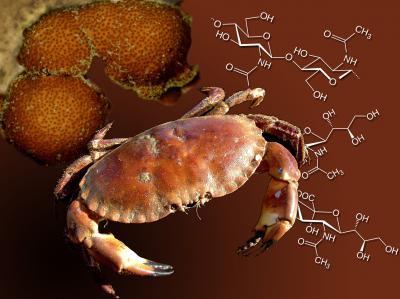Scientists at the Vienna University of Technology have perfected a process to introduce bacterial genes into the fungus Trichoderma and make it produce N-Acetylneuraminic acid - Neu5Ac or NANA - which is a natural carbohydrate involved in biological functions like toxin neutralization, cellular adhesion and glycoprotein lytic protection. NANA is important for treating viral infections. The raw material used by the fungus is chitin, which makes up the shells of crustaceans, so it's totally organic and sustainable. Except it's also genetic modification.
Viral Infections are treated with antiviral drugs, the kind that make pharmaceutical companies rich, and antiviral drugs are often derived from NANA. NANA is expensive to produce, it costs around $2,500 per gram - that's right, that's about 40 times as much as gold and even more than whale vomit. So producing it cheaper is good for poor people, right? Well, so are genetically modified foods, since that means poor people can grow their own local, organic food and not have to buy it from Europe and have it hauled in on emissions-belching boats and trucks. That doesn't stop anti-science hippies from being against it.
Biotechnologist Astrid Mach-Aigner say their new method to produce NANA is eco-friendly and also cheaper because the materials are abundant. However, it involves changing an organism using precision science rather than random mutation by cosmic rays so it is still going to be wrong to progressive kooks with their 'natural' fetish. For the rest of us it is good news because cheap materials keeps costs lower all down the production chain. Trichoderma is very common, it's in soil, it's in trees. Chitin is also very common. After cellulose, it is the most abundant biopolymer on the planet, found in the carapaces of crustaceans and the shells of insects.

The fungus Trichoderma has been genetically modified so that it can produce NANA from chitin, like in these crab shells. Thanks, science! Credit: Vienna University of Technology / Creative Commons license - Hans Hillewaert.
Put them together and it's like a Batman/Superman World's Finest team-up of terrific science wizardry; a way to make cheaper drugs using abundant, natural, renewable resources. They estimate that in just the oceans, ten billion tons of chitin are formed every year - hundreds of times more than the mass of all the people on earth. Thus, chitin is completely sustainable for chemical synthesis.
"We knew that Trichoderma can degrade chitin – that's what the fungus naturally does in soil", says Astrid Mach-Aigner. "Usually, Trichoderma breaks down chitin to monomer amino sugars."
Bacterial genes had to be introduced into the Trichoderma genome to produce the desired chemical product but with the new genes, two extra reaction steps are now possible and pharmaceutical N-Acetylneuraminic acid is produced. Presto, the new Trichoderma line can now be cultivated in bioreactors and produces NANA from chitin.
The method has been patented by the Vienna University of Technology and they intend to use it for the cheap and eco-friendly production of pharmaceuticals on an industrial scale in the near future. Help people live better lives, advance science, get rich. That's the way it should be.





Comments